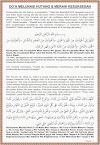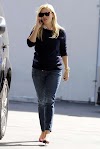Inside Rolex
Rolex World Headquarters
Rolex Headquarters today in Geneva Switzerland
Rolex Plan-Les-Site
Today, Rolex is a vertically integrated company, which means they produce and manufacture 100% of the components used in their watches. Rolex is headquartered in Geneva, Switzerland, but has facilities located all over Switzerland.
The photo above shows the Rolex Plan-Les-Quates facility which contains the Rolex foundry where Rolex melts gold, platinum and steel to use in the production of their watches. The photo below shows liquified gold being poured at the Rolex foundry.
Rolex also builds and assembles Oyster cases and bracelets at the Plan-Les-Quates facility.
Rolex Dial and Bezel Facility
The Rolex facility in Chêne-Bourg, Switzerland specializes in dial making as well as making watch hands, bezels and crystals.
Rolex watch cases and bracelets, as well as all parts are made with CNC machines, but all parts are still hand assembled by Rolex trained master watchmakers.
The Rolex facility in Chêne-Bourg workshops also specialize is inserting precious stones onto dials and on bezels as seen below.
Rolex Movement Making Facility
Rolex Building 7 Just Completed in 2012 pictured above
All movement parts, from hairsprings to mainplates, are made in Bienne. Rolex does not publish their annual production output, but it is estimated approximately 2000 employees produce 50 million movement components annually–which end up in more than 750,000 Rolex automatic movements assembled per year in Bienne.
[Note: How do we know that Rolex produces more than 750,000 movements annually, if Rolex is a privately-held company that does not publish such numbers? Because the Contrôle Officiel Suisse des Chronomètres, is required to publish the exact number of movement (COSC) certificates for each brand, and in 2011, they published Rolex figures at 751,000 COSC movements.]
Before the movements are installed into Rolex cases in Geneva, they first travel to the Contrôle Officiel Suisse des Chronomètres, where they are tested for Swiss Chronometer accuracy, and assuming they pass, are award the prestigious C.O.S.C. certification.
This next photo shows the entire Rolex campus located in Bienne, Switzerland, in an industrial section, known as Champs-de-Boujean, with the Jura mountain range seen in the background.
Hans Wilsdorf
Hans Hilsdorf, Founder of Rolex pictured above in 1905
Hans Wilsdorf, the founder of Rolex originally partnered with Aegler (in 1905). Aegler S.A. was located in Bienne, Switzerland, which specialized in making high-quality watch movements. Jean Aegler, founder of Aegler S.A. is pictured below. He passed away in 1891, at which time his son Hermann Aegler took over the family business.
Jean Aegler, Founder of Aegler S.A. is pictured above
Aegler S.A. original movement making headquarters were erected in 1878 and located in Bienne, Switzerland on a hillside that overlooked Bienne's Old Town. The old Aegler manufacturing facility is pictured below in this 1955 photo.
Notice the Rolex signs on the two buildings pictured on the right side of the photos below. The Rolex extension was erected in 1914 by Hermann Aegler. Today these buildings are are officially a Bienne landmark, which represents a significant chapter of Bienne's watchmaking history.
The Aegler/Rolex Bienne Factory is picture above in 1955
Aegler S.A. was founded in 1878 by Jean and Anna Maria Aegler at a time when Bienne was becoming a significant watchmaking capital.
The Aegler/Rolex Bienne Factory is picture above in 1955
Aegler was renowned for making very precise, small watch movements, which is exactly what Hans Wildforf was looking for to place into his Rolex wrist watches.
In the photo below we see a Rolex draftsmen in 1955 at the Aegler facility working on designing the first true "in-house" Rolex movement, known as the Caliber 1500, which was formally introduced in 1957.
The Rolex Caliber 1500 ended up being a work horse movement and was used by Rolex in watches up until 1990. It is fascinating to see that the draftsman had to stand up and draw a movement. The Rolex Caliber 1500 was the first Rolex movement that instantly changed the date. Rolex began replacing the Caliber 1500 in 1977 with the Caliber 3035. The Caliber 3135 Rolex movement eventually began replacing the Caliber 3035 in 1988.
The Aegler/Rolex Bienne Factory is picture above in 1955
For many decades, Aegler grew as Rolex grew and they continued as the primary supplier for Rolex movements. This next rare vintage photo shows Aegler watchmakers making Rolex movements in the Aegler facility in Bienne, Switzeraland.
The Aegler/Rolex Bienne Factory is picture above in 1955
The Rolex Oyster Perpetual
The First Waterproof Self-Winding Watch
The Development of the Rolex Oyster in 1926 was an incredible horological achievement, but the challenge was it made it more difficult to manually wind the watch because you had to unscrew it first, then wind it, then re-screw the Oyster crown.
After Hans Wilsdorf successfully brought the Rolex Oyster to market, he turned his attention to the other Achilles' heel of wrist-watches, and that was the lack of their ability to self-wind themselves.
After Hans Wilsdorf successfully brought the Rolex Oyster to market, he turned his attention to the other Achilles' heel of wrist-watches, and that was the lack of their ability to self-wind themselves.
Inventing the automatic, or perhaps auto-magic, wristwatch which could wind itself represented the dream of the ages in the horological world. For centuries, many famous watchmakers tried to perfect the automatic or self-winding watch, but none were successful.
This fascinating Rolex ad from the 1950s tells the story about how Rolex's brilliant chief technical director, M. Emile (Emil) Borer figured out how to perfect Abraham-Louis Perrelet's self-winding watch he invented centuries prior in 1770.
This fascinating Rolex ad from the 1950s tells the story about how Rolex's brilliant chief technical director, M. Emile (Emil) Borer figured out how to perfect Abraham-Louis Perrelet's self-winding watch he invented centuries prior in 1770.
Emile Borer
Chief Technical Director
Aegler Workshop. Beil, Switzerland
1898-1967
Emile Borer, (pictured below) the Chief Technical Director of Rolex was mentioned in the ad above, as having been the person at Rolex who is credited with figuring out how to make the automatic movement work correctly by inventing and perfecting the modern rotor system.
Emile was the son-in-law of Jean Aegler. Jean Aegler was the founder of Aegler Workshop, who provided Rolex with all their movements. Emile Borer joined Aegler Workshop as an engineer during World War I, and he soon become responsible for developing new technology. In 1944, Emile Borer became the General Manager of the Aegler Workshop, which remained the primary supplier of Rolex movements until Rolex purchased Aegler Workshop in 2004.

In 1931 Rolex patented the Perpetual rotor which automatically wound the watch, thus eliminating the need to ever wind it again!!! This not only made it more convenient but also more accurate because the wrist watch would never stop automatically winding itself, so long as you wore it.
For those too young to remember, manual-wind wrist watches, required you wind them daily which was an inconvenience for most people, although some people, like train conductors liked it ;-))))))

The watch pictured pictured above and below was made in 1931, and Rolex put an exhibition caseback on it to easily show potential consumers how it worked.
As you can see in the photo below there is a rotor that says "Rolex Auto Rotor" which automatically spins clockwise or counter-clockwise just from the movement of your wrist, thus "Automatically" winding the mainspring. In other words, even the slightest movement of your wrist (using gravity) will wind the watch, thus keeping the mainspring at optimum tension.
Rolex based the design of their perpetual rotor system on one that Abraham Louis Perelet developed in 1770, and in the years before Rolex perfected their methodology, there was a company named Harwood that created a self-winding rotor system that only moved clockwise, but had many challenges.
By creating an auto-winding or self-winding wristwatch, Rolex once again revolutionized the watch–and again, Rolex was not the first to explore creating a self-winding watch, but Hans Wilsdorf and Rolex were the first to perfect it, patent, and mass market it successfully.
The patent on the Rolex perpetual eventually ran out in 1948 at which time everybody was free to develop their own automatic rotor systems that used gravity to wind their movements–and they did...
Bienne, Switzerland
Earlier this week, Rolex showcased their all-new expansion to the press.
Rolex Movement Making Facility
This following photos were all taken on site at Rolex's all-new Building 7 located in Bienne, Switzerland where all the Rolex movements are made.
This all-new structure began construction in 2009. It was designed to be extremely efficient and comfortable. The two photos below show how the skylights flood the building with natural light all-day long.
This next photo (below) shows a super, state-of-the-art robotized storage system, which allows Rolex to store and later recall watch movement parts.




































0 Yorumlar